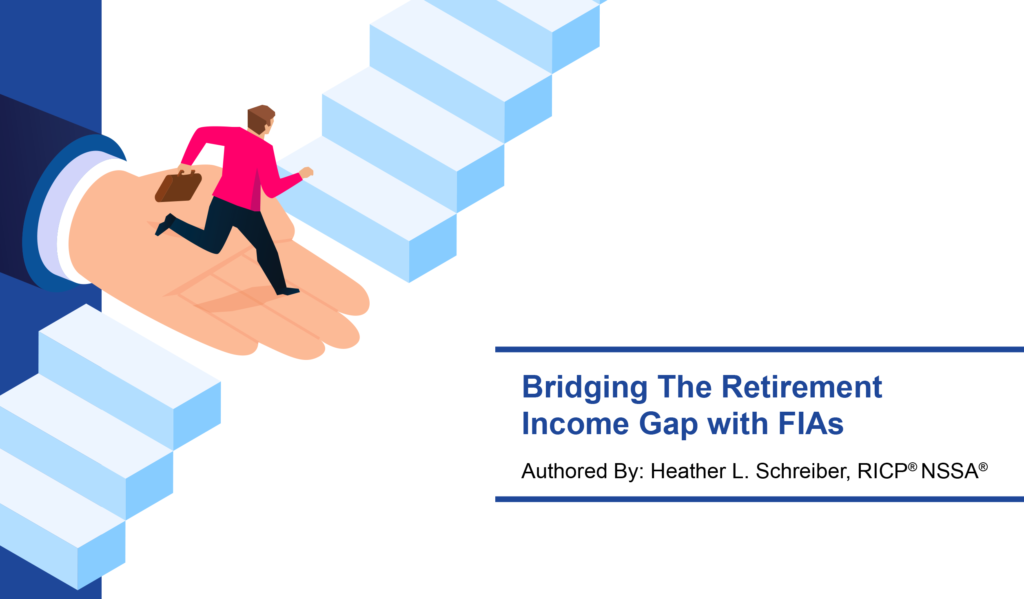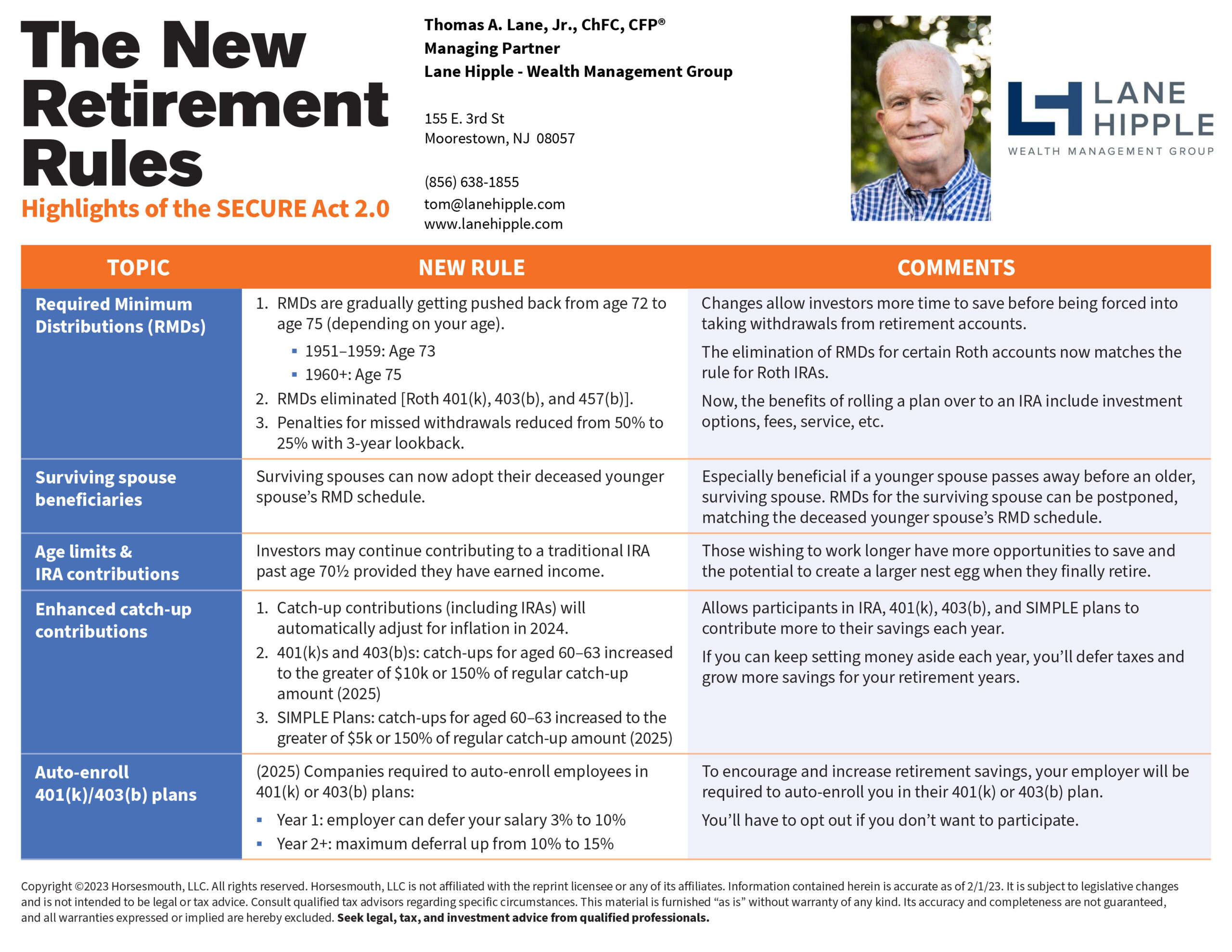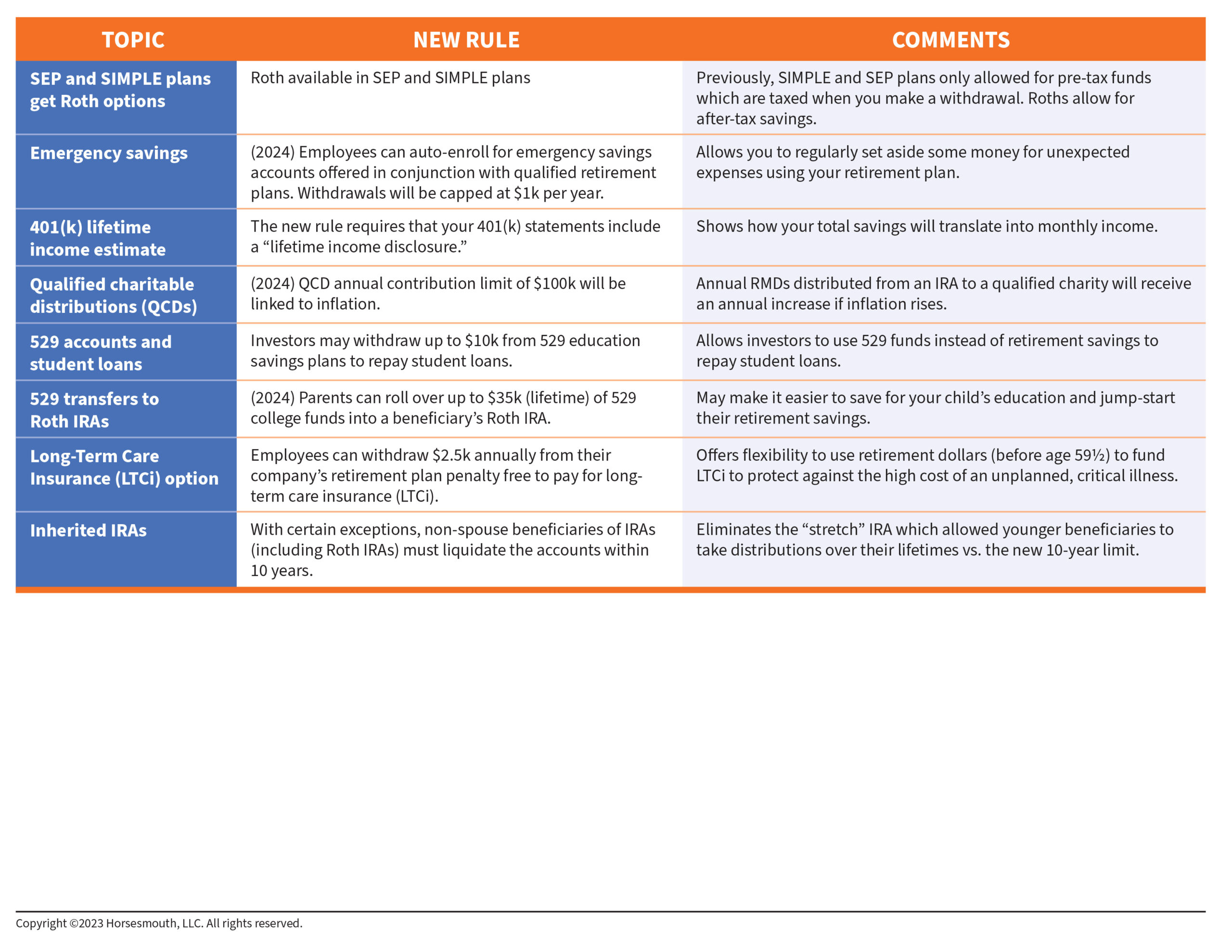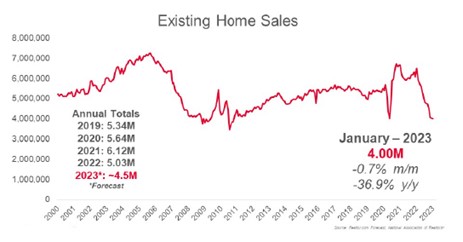-
Bridging The Retirement Income Gap With FIAs

Authored By: Heather L. Schreiber, RICP® NSSA®
What do retirees fear most?
According to a GoBankingRates survey, 66% of Americans worry that they will run out of money during retirement. That’s ahead of the 50% who were concerned about a steep healthcare outlay¹.
How can seniors and their financial advocates address this worry? Many are choosing to do so with a fixed index annuity (FIA). LIMRA reports that FIA sales were $79.4 billion in 2022, up 25% from 2021, and 8% higher than the record set in 2019²’³. What’s so appealing about FIAs? Before the big reveal, let’s set the stage.
Shaky Stool
During the 20th century, a so-called 3-legged stool provided an underpinning for retirees’ finances. That is, cash flow could come from 3 sources: Social Security, pensions from former employers, and personal savings. However, employer pensions have become the exception rather than the rule for many retirees. Pensions are still common for long-term government workers but are relatively rare in the private sector.
Instead of pensions, private sector employers offer employees the opportunity to put wages into defined contribution plans such as 401(k)s. Generally, those dollars go into funds holding stocks and bonds. Recently, though, market
volatility has been in the headlines.Down Year
The Morningstar U.S. Market Index lost 19.4% in 2022, the biggest annual loss since 2008…when it lost a 38.4%. Bonds are supposed to offer stability when stocks sag, but the Morningstar U.S. Core Bond Index lost 12.9% in 2022, its biggest annual loss since inception of the index in 1993³.
To demonstrate the potential effect of such results on an approaching retirement, suppose a hypothetical Holly Smith retired in early 2022. At the start of that year, Holly had managed to accumulate $600,000 in retirement savings, evenly divided between stock funds and bond funds.Assume Holly’s investments matched the broad equity and fixed-income markets. At the start of 2023, her holdings would have been down to $241,800 in stocks and $261,300 in bonds—from $600,000 for retirement to just over $500,000. After such a loss, Holly would need almost a 20% gain just to get back to where she had been. Moreover, our Holly had retired in 2022, taking 4% of her savings ($24,000) to supplement Social Security last year. Now, Holly bears sequence-of-return risk, which impacts people whose retirement coincides with a bear market.
Holly’s choices might be taking that same $24,000 this year, from the $479,100 left in her portfolio. That’s a 5% withdrawal rate, which could lead to depletion while Holly is still alive. Or, Holly might stick to her 4% strategy, withdrawing only $19,164 (4% of $479,100) in 2023, which could mean cutting back on her lifestyle in retirement.
Financial markets have bounced back in the past, and that could be the case again, helping Holly’s portfolio last longer. Even with a rebound, retirees such as Holly face risks such as longevity that could eventually drain her portfolio, inflation that could strain her budget, and a need for costly long-term care. Threats to cut back on Social Security benefits add to Holly’s dilemma.
Mitigating Retirement Risks
Savvy planning can help take these key retirement risks off the table, or at least reduce them to the point where retirees are comfortable. Fixed Index Annuities (FIAs) can help mitigate these concerns to the extent that exceeds what other sources of retirement income can provide for retirees.
An FIA is funded either through a single lumpsum payment or a series of periodic contributions from a consumer to an insurance company. In exchange, the consumer receives a contract that may deliver tax-deferred buildup, principal protection in a down market, and growth potential. Increases to the annuity value, termed interest, are credited to the contract annually, tied to a market index such as the S&P 500. FIA dollars are not directly invested in the index components but are pegged to the results.
Generally, FIAs offer protection against market losses. In return, they usually provide lower upside potential than being invested directly in the market. With a crediting rate of 70% of the S&P 500, for example, a hypothetical 12-month index gain of 10% would generate a 7% crediting rate to the annuity value of an FIA with that provision. The tax-deferred nature of an FIA allows money to compound over time without having to pay ordinary income taxes on the growth until funds are withdrawn. Consumer have the choice of turning on a reliable income stream from an FIA for a period of time or for a lifetime to supplement other sources of income in retirement.
Related Article: Passing an Inheritance to Your Children: 8 Important Considerations
Bountiful Benefits
On the plus side, considering a fixed index annuity when building a retirement income strategy has several advantages which include:
Tax deferral. Any gains inside an FIA avoids immediate income tax, allowing the annuity owner to take advantage of pre-tax compound growth during the accumulation phase. FIA owners also benefit from flexibility in creating retirement income drawdown strategies by controlling when and how to take income from the annuity.
Asset allocation alternative. Conventional wisdom holds that a 60-40 split, stocks to bonds, combines the growth potential of equities with the stability of fixed income. However, both stocks and bonds suffered double-digit losses in 2022, as previously mentioned. Concerns of ongoing inflation may lead to hesitation regarding investing in bonds.
An income stream that retirees can’t outlive. Americans are living longer than ever. That generally equates to more time spent in retirement and pressure on retirement assets to last longer. Even with Social Security and perhaps other sources of dependable cash flow, there still may be a gap between actual income and desired annual outflow. An FIA can fill that gap, generating income that will last as long as the retiree (and perhaps a spouse) may live.
Principal protection against possible market losses. As explained above, sequence-of-returns risk occurs when financial markets drop early in retirement while a retiree is tapping his or her investment portfolio. That can cause lifelong savings to deplete more rapidly than would have been the case if those market corrections occur later in retirement. An FIA can protect retirement assets by offering a source of cash flow that is not exposed to this risk during a market downturn.
Income to allow deferral of Social Security benefits. Waiting to claim Social Security benefits, perhaps to as late as age 70, can increase lifelong payouts substantially and often increase payments to a surviving spouse. In order to finance such a delay while avoiding additional stress on other assets, an FIA can play a key role. A retiree might start tapping into an FIA at, say, age 62 to bridge income so that Social Security claiming occurs later. Seniors can make their accumulated retirement assets work smarter, not harder.
Support for a surviving spouse. When one spouse dies, the Social Security income benefit of the lower-earning spouse goes away, and the higher benefit is payable to the survivor. Loss of a spouse generally means a decline in income—going from two Social Security benefits to one survivor benefit—so depending on an FIA to replace lost income may be a strategy that can help the survivor maintain the same standard of living.
A hedge against unanticipated long-term care expenses in retirement. Standalone LTC insurance policies can be costly. Data from the American Association for Long-Term Care Insurance put the average premium for a 55-year-old couple on a $165,000 initial policy with a 3% annual growth in maximum coverage at approximately $5,025 per year³. That can be an unnecessary expense if the policy benefits are never used.
Nevertheless, LTC coverage may be necessary, because Medicare does not cover custodial LTC and the average cost nationwide for a private room in a nursing home is about $9,000 a month, according to Seniorliving.org⁴. Adding a long-term care rider to an FIA can provide an additional layer of protection, offsetting the potential expense of a need for LTC.
Spousal benefits. FIAs, when jointly owned, can create income streams over the course of two lives for a married couple. This can be extremely important because widow(er)s typically become single taxpayers, owing increased income tax. What’s more, a surviving spouse may not have much experience handling the couple’s finances. An FIA offering continued contract ownership to the survivor may provide tax deferral and market risk-free cash flow to an aging widow(er) in need of stable income.
Legacy planning: Non-qualified annuities, with properly named beneficiaries, may be utilized as an estate planning opportunity to permit non-spousal beneficiaries, such as the owner’s children, to stretch post-death withdrawals over decades, based upon their life expectancy. That’s because non-qualified annuities are not covered by SECURE Act’s 10-year rule.
Due Diligence
No financial product is perfect for every consumer in every situation, and that’s true for FIAs, too. These annuities may deliver exceptional results, but there are risks as well. For starters, any guarantees are backed by the issuer, so it’s necessary to evaluate the insurer’s financial strength; therefore, due diligence is vital. A knowledgeable financial professional can provide real value here.
In addition, FIAs may have costs, just as is the case with any financial product, such as an additional fee for an income rider. Again, a financial professional can help by determining the actual cost of buying a specific FIA to ensure that the product and associated costs meets the specific needs of the investor. The more that is known before buying an FIA, the greater the chance of enjoying the multiple benefits listed above.
Retirement Action Plan:
- Prepare early. Determine a realistic retirement timeline that considers income needs in retirement, source of retirement income, family history, and current investor health.  
- Develop a plan that includes guaranteed income sources for predicable and necessary expenses. This plan should aim to fill any projected gaps.  
- Recognize the various risks that come with any financial plan, including market risk, healthcare risk, inflation, loss of employment, or death of a loved one. Adjust the approach to minimize such concerns.  
- Schedule a plan review at least annually with a knowledgeable financial professional and make needed changes.  
- Consider including a fixed index annuity as part of a retirement income plan, to provide needed lifelong income without exposure to possible market weakness.
Sources
² www.morningstar.com/articles/1131213/just-how-bad-was-2022s-stock-and-bond-market-performance
³ www.aaltci.org/long-term-care-insurance/learning-center/ltcfacts-2022.php#2022costs
⁴ www.seniorliving.org/nursing-homes/costs/
Not affiliated with the Social Security Administration or any other government agency. This information is being provided only as a general source of information and is not intended to be the primary basis for financial decisions. It should not be construed as advice designed to meet the needs of an individual situation. Please seek the guidance of a professional regarding your specific financial needs. Consult with your tax advisor or attorney regarding specific tax or legal advice. ©2023 BILLC. All rights reserved. #23-0432-053024
-
Financial Planning for Recent College Graduates
Six Steps to Prepare for Long-Term Success
Graduating from college is a major milestone, but it can also be a daunting time for many young adults as they transition into the “real world”. If you have a recent college graduate in your life, they may be facing a number of financial challenges, from student loan debt to finding their first job. Financial planning may be the last thing on their mind, but you can use your influence and experience to help them see the benefit of taking financial planning steps as a recent college graduate in order to set themselves up for long-term success.
Share the six steps below to help them get started.
Financial Planning for Recent College Graduates Tip #1: Create a Budget
The first step in any financial plan is to create a budget. Don’t think of it as something that constrains you. Rather, consider your budget a tool to balance spending on needs and wants, and to help you achieve your goals. Creating a budget helps you understand where your money is going and where you can make adjustments to save more. Start by listing all of your monthly income and expenses, including rent, utilities, groceries, transportation, and any debt payments, such as student loans. Then, look for areas where you can cut back, such as eating out less or finding a more cost-effective apartment. Be sure to set aside some money each month for savings, as well. (More on that below.)
Financial Planning for Recent College Graduates Tip #2: Make a Plan to Pay Off Student Loans
Student loan debt is a major concern for many recent college graduates. If you have student loans, make a plan to pay them off as quickly as possible. Consider consolidating your loans or refinancing them to get a lower interest rate. You may also want to explore income-driven repayment plans, which can reduce your monthly payments based on your income.
Financial Planning for Recent College Graduates Tip #3: Start Saving for Retirement Now
It’s never too early to start saving for retirement – even if you’re in your early twenties. When you begin your first professional job, be sure to take advantage of your employer’s 401(k). If they don’t offer one or you dislike the plan details, you can also open your own individual retirement account (IRA). The earlier you start saving, the more time your money has to grow. Your future self will thank you!
Related Article: How Inflation Impacts Wealth Management and Investment Strategies
Financial Planning for Recent College Graduates Tip #4: Plan to Navigate Rainy Days
Life is unpredictable, and you never know when you might face an unexpected expense or job loss. That’s why it’s important to build an emergency fund so you won’t be forced into debt on rainy days – or seasons of life. Aim to save three to six months’ worth of living expenses in a separate savings account. This will give you a financial cushion in case of an emergency, and it will give you peace of mind, too.
Financial Planning for Recent College Graduates Tip #5: Understand and Protect Your Credit Score
Your credit score is an important factor in many financial decisions, such as getting a loan or renting an apartment. Make sure you understand what affects your credit score, such as paying bills on time and keeping your credit card balances low. It’s important to protect your credit score, too, so check your report regularly to make sure there are no errors or fraudulent activity. Check out this resource from the Consumer Financial Protection Bureau to learn more.
Financial Planning for Recent College Graduates Tip #6: Set Financial Goals
Another important step in financial planning for anyone – recent college graduates included – is to set financial goals. These could be anything from saving for a down payment on a house to paying off your student loans by a certain date. Having clear goals will help you stay motivated and focused on your financial plan.
Recent College Graduates Should Begin Financial Planning Now
Graduating from college is a big win and something to be proud of. It’s also a time of significant transition for many people, and it’s important to start off on the right foot financially in order to protect your future. Use the six steps above to take control of your finances now and set yourself up for long-term financial success.
If you’d like to discuss financial planning for recent college graduates, contact Lane Hipple Wealth Management Group at our Moorestown, NJ office by calling 856-452-8026, emailing info@lanehipple.com, or to schedule a complimentary discovery call, use this link to find a convenient time.
Illuminated Advisors is the original creator of the content shared herein. I have been granted a license in perpetuity to publish this article on my website’s blog and share its contents on social media platforms. I have no right to distribute the articles, or any other content provided to me, or my Firm, by Illuminated Advisors in a printed or otherwise non-digital format. I am not permitted to use the content provided to me or my firm by Illuminated Advisors in videos, audio publications, or in books of any kind.
-
The New Retirement Rules
Highlights of the SECURE Act 2.0


-
5 Ways a Financial Advisor Can Help You Prepare for Tax Season

A Strong Tax Strategy is Part of a Thoughtful, Comprehensive Financial Plan
Tax season is upon us and, while not every financial advisor is a Certified Public Accountant (CPA), that doesn’t mean they can’t be helpful. Your financial advisor can assist you with making strategic tax moves throughout the year to help reduce your overall tax burden. As you read below, keep in mind that the sooner you begin having these conversations with your advisor about your tax strategy, the better off you’ll be at tax time.
Finding Ways to Maximize Your Tax Savings
There are many financial moves you can make throughout the year that will result in paying lower taxes, and a financial advisor will be educated about them. For example, some investment accounts let you make tax-deferred contributions, which can offer you the opportunity to save money on taxes while working to build your retirement savings. Take a company-sponsored 401(k), for instance. If you max out your contributions to this account, all of the money going in is pre-taxed, so you’ll be putting money away for retirement while reducing your tax bill in the present.
Keeping Record of Your Capital Gains and Losses
When filing your taxes, you’ll have to know how much you earned and lost from your investments for that year. A financial advisor will have an accurate and consistent record of your investments, which they can give to your accountant on your behalf. This will save you time and energy, and help you ensure you’re paying appropriate capital gains tax, without over-paying.
Developing a Tax-Savvy Gifting Strategy
There’s a lot to be gained when we gift our money to others. Not only do you get the intrinsic rewards associated with the joy and meaning that comes from helping others, but you can enjoy valuable tax benefits, too. Sit down with your financial advisor and discuss how you can gift your money in ways that ultimately help lower your tax bill, too. And this isn’t just for charities; if you want to give money to your family members for any reason, there are plenty of gifting strategies that let you transfer your wealth without a tax penalty. Check-in with your financial advisor before making any gifts so you can be sure to maximize the opportunity.
8 Considerations For Passing an Inheritance To Your Children
Minimizing the Tax Burden that RMDs Bring
Once you reach the age of 73, you’ll have to begin taking out Required Minimum Distributions (RMDs) from any IRA or 401(k) accounts that you have. While this comes as no surprise, often the uptick in your tax bill from having to pay income tax on those distributions does come as a surprise to retirees. A financial advisor will be able to provide you with management strategies so that you can lower your tax liabilities and be more prepared when the time comes to begin taking distributions.
Determining Tax-Efficient Investment Strategies
Although a financial advisor can’t necessarily protect you from capital gains tax, they will be able to help you by implementing strategies such as tax-loss harvesting, offsetting gains with losses, and avoiding issues such as “phantom tax,” which limit your overall tax liability. So, they’ll not only be able to help you manage and balance a portfolio, but they’ll be able to ensure you’re following the best investment strategies to benefit you the most when it comes time to file your taxes.
Do You Need a Financial Advisor to Assist with a Tax Strategy?
The world of taxes can be incredibly confusing, especially considering they’re constantly changing depending on the economy and new legislation. Having a financial advisor you trust is an important addition to your tax planning arsenal. A financial advisor can guide you throughout the year to ensure you’re making the best financial choices to help boost your tax strategy, with the ultimate goal of allowing you to save more of your hard-earned dollars.
If you think you would benefit from a conversation about your tax strategy, contact Lane Hipple Wealth Management Group at our Moorestown, NJ office by calling 856-638-1855, emailing info@lanehipple.com, or to schedule a complimentary discovery call, use this link to find a convenient time.
Illuminated Advisors is the original creator of the content shared herein. I have been granted a license in perpetuity to publish this article on my website’s blog and share its contents on social media platforms. I have no right to distribute the articles, or any other content provided to me, or my Firm, by Illuminated Advisors in a printed or otherwise non-digital format. I am not permitted to use the content provided to me or my firm by Illuminated Advisors in videos, audio publications, or in books of any kind.
-
Existing Home Sales Drop for 12th Straight Month, Lowest Since 2010

On Tuesday, the National Association of Realtors reported that existing-home sales fell for the 12th straight month in January. In addition, month-over-month sales were mixed among the four major U.S. regions, as the South and West registered increases, while the East and Midwest experienced declines. All regions recorded year-over-year declines.
Housing Highlights
- Existing-home sales waned for the twelfth consecutive month to a seasonally adjusted annual rate of 4.00 million. Sales slipped 0.7% from December 2022 and 36.9% from the previous year.
- The median existing-home sales price increased 1.3% from one year ago to $359,000.
- The inventory of unsold existing homes grew from the prior month to 980,000 at the end of January, or the equivalent of 2.9 months’ supply at the current monthly sales pace.

Bottoming Out?
“Home sales are bottoming out. Prices vary depending on a market’s affordability, with lower-priced regions witnessing modest growth and more expensive regions experiencing declines. Inventory remains low, but buyers are beginning to have better negotiating power.
Homes sitting on the market for more than 60 days can be purchased for around 10% less than the original list price.”
- The median existing-home pricefor all housing types in January was $359,000, an increase of 1.3% from January 2022 ($354,300), as prices climbed in three out of four U.S. regions while falling in the West.
- This marks 131 consecutive months of year-over-year increases, the longest-running streak on record.
- Properties typically remained on the market for 33 days in January, up from 26 in December and 19 in January 2022. 54% of homes sold in January were on the market for less than a month.
Location, Location, Location- Existing-home sales in the Northeast retracted 3.8% from December, down 35.9% from January 2022. The median price in the Northeast was $383,000, up 0.3% from the previous year.
- In the Midwest, existing-home sales slid 5.0% from the previous month, declining 33.3% from one year ago. The median price in the Midwest was $252,300, up 2.7% from January 2022.
- Existing-home sales in the South rose 1.1% in January from December, a 36.6% decrease from the prior year. The median price in the South was $332,500, an increase of 3.4% from one year ago.
- In the West, existing-home sales elevated 2.9% in January, down 42.4% from the previous year. The median price in the West was $525,200, down 4.6% from January 2022.
Sources: nar.realtor
Copyright © 2023 MainStreet Journal. All rights reserved
Distributed by Financial Media Exchange.